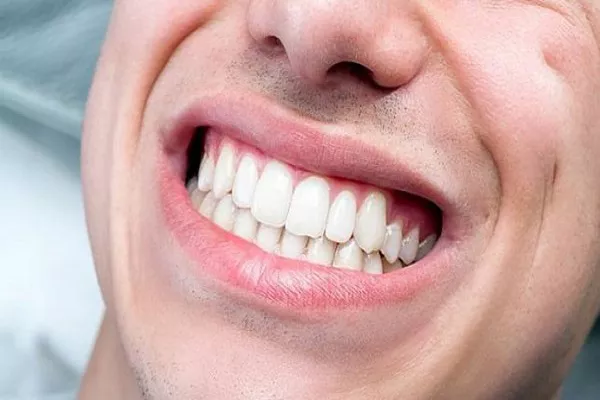Orthodontic treatment has become increasingly popular over the years, with many people seeking to achieve that perfect smile through braces. Braces are highly effective in correcting misaligned teeth, improving bite issues, and enhancing overall oral health. However, before getting braces, it’s essential to understand what an orthodontist provides during the treatment process. In this article, we will explore the different elements that orthodontists offer their patients when getting braces, ensuring a successful and comfortable journey towards a beautiful, straight smile.
1. Comprehensive Orthodontic Evaluation
The first step in getting braces is a comprehensive orthodontic evaluation. During this initial consultation, the orthodontist will assess your teeth, jaw, and overall oral health. They may take X-rays, photographs, and dental impressions to create a personalized treatment plan that addresses your specific dental needs.
2. Customized Treatment Plan
Based on the evaluation, the orthodontist will create a customized treatment plan tailored to your unique requirements. This plan will outline the recommended type of braces, estimated duration of treatment, and the expected results. The orthodontist will explain the plan in detail, answering any questions or concerns you may have.
3. Different Types of Braces
Orthodontists offer various types of braces to cater to individual preferences and dental needs. The most common types of braces include:
Traditional Metal Braces:Traditional metal braces consist of metal brackets attached to the teeth, connected by wires and elastic bands. They are highly effective and have been used for decades to correct various orthodontic issues.
Ceramic Braces:Ceramic braces work similarly to metal braces but use tooth-colored or clear ceramic brackets that blend in with your teeth, making them less noticeable.
Lingual Braces:Lingual braces are custom-made braces that fit behind the teeth, making them virtually invisible from the front. They are an excellent option for those who desire a discreet treatment option.
Invisalign or Clear Aligners:Invisalign is a popular alternative to traditional braces. It involves a series of clear, removable aligners that gradually move the teeth into the desired position without the need for brackets or wires.
4.Placement of Braces
Once you and your orthodontist decide on the type of braces, the next step is the placement procedure. The orthodontist will carefully and skillfully bond the brackets onto the teeth and thread the wires through them. This process is generally painless, but you may experience slight discomfort as your mouth adjusts to the braces.
5. Adjustment and Monitoring
After the initial placement, regular adjustments are necessary to guide your teeth into their correct positions progressively. These adjustments involve tightening or changing the wires, bands, or aligners. During each visit, the orthodontist will monitor your progress and make necessary modifications to ensure optimal results.
6. Orthodontic Accessories
In addition to braces, orthodontists may provide various accessories to aid in the treatment process:
Rubber Bands (Elastics):Elastics are small rubber bands that connect specific brackets to help correct jaw misalignments and improve the bite.
Spacers:Spacers are small separators placed between teeth to create enough space for fitting bands or other orthodontic appliances.
Retainers:After completing the active phase of orthodontic treatment, the orthodontist will provide retainers to maintain the new alignment of your teeth. Retainers are typically removable or fixed behind the teeth.
Herbst Appliance:A Herbst appliance is used to correct severe overbites by encouraging the lower jaw to catch up with the upper jaw.
7. Oral Hygiene Instructions
Maintaining good oral hygiene is crucial during orthodontic treatment to prevent cavities, gum disease, and other dental issues. Your orthodontist will provide detailed instructions on how to clean your braces and teeth effectively, which may include using specific tools like interdental brushes or water flossers.
8. Dietary Guidelines
Certain foods can damage braces or increase the risk of complications. Orthodontists typically provide dietary guidelines, advising patients to avoid sticky, hard, or overly sugary foods that could compromise the braces’ integrity.
9. Emergency Care Information
Orthodontists will equip patients with essential information on handling potential emergencies, such as loose or broken brackets or wires. This ensures that patients can take immediate steps to alleviate discomfort and prevent further problems until they can see their orthodontist.
Conclusion
Getting braces is a significant investment in your dental health and your smile’s appearance. Orthodontists play a crucial role in providing personalized treatment plans and a range of options to meet individual needs. From the initial evaluation to the placement of braces and ongoing monitoring, orthodontists guide patients through the process, ensuring successful and rewarding results. By following the provided oral hygiene instructions, dietary guidelines, and knowing how to handle emergencies, patients can make their orthodontic journey smoother and more enjoyable. Remember, a stunning smile begins with a visit to your trusted orthodontist.
https://www.padmel.com/archives/9312
https://www.padmel.com/archives/5662
https://www.padmel.com/archives/5618



























